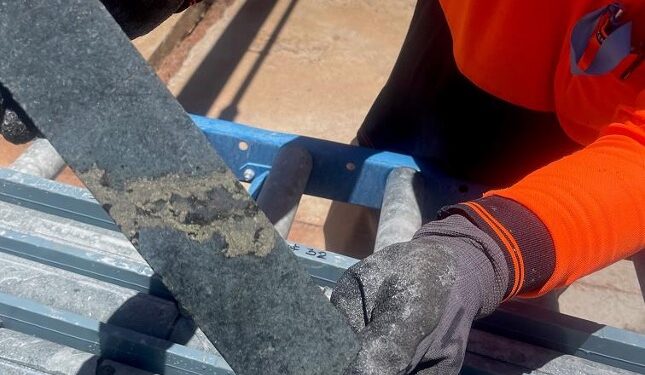Estrella Resources Limited (ASX: ESR) has received “very encouraging” results from the drill programmes at both of its priority regional prospects, Mossgiel and Gossan Hill, located within the 100% owned Carr Boyd nickel-copper project, located approximately 80km from Kalgoorlie, WA.
Initial drilling at both prospects has intersected varying amounts of nickel-copper sulphides within the basal pyroxenite units, proving that these areas have the potential to host additional nickel-copper sulphide deposits.
Mapped sulphide assimilation areas surrounding the complex have introduced sulphidic material into the ultramafics during emplacement. These sulphides have collected in the melts within the T5, Mossgiel and Gossan Hill basal Pyroxenite units, proven by the recent drilling.
Further settling of the sulphides onto the basal contact is predicted to occur, as is the case at T5 and Broonhill where Estrella has discovered basal nickel-copper sulphide accumulations.
The first two RC holes at the Gossan Hill Prospect have intersected zones of cloud and disseminated nickel- copper sulphides within the lower pyroxenite unit. This demonstrates the Gossan Hill Pyroxenite has had exposure to wall rock contamination and sulphide assimilation, a necessary criterion required to form nickel-copper deposits on the basal contact.
Whilst the company is not expecting the intersection to grade as significantly as massive sulphides when assays are received, the style and tenor of mineralisation identified by geological logging and handheld XRF strongly suggests the sulphides are primary in nature, meaning that the sulphides were in the melt when it solidified and that they are of a similar nature to mineralisation observed on the T5 and Broonhill contacts.
The Gossan Hill area is the southern basal contact of the Carr Boyd Igneous Complex. Recognising this position as significant, Estrella designed an RC programme to locate and define the orientation of the contact ahead of diamond drilling and DHEM. To prove the pyroxenite is fertile was the first major step. The contact is reminiscent of that seen at T5-Broonhill.
Up until now, the 3.6km long basal contact itself had not received any historical drilling and remains open in all directions.
“The possibility of one new discovery is enough to get us excited but what we have today is a twin discovery, with nickel-copper sulphides uncovered at both Mossgiel and Gossan Hill. This opens up a swathe of new prospective ground within Carr Boyd,” Managing Director, Chris Daws, said.
“The prospective areas to be tested are immense in size and it is only a matter of time and holes before we truly understand whether we have a major orebody, or two.
“Our drilling and geological teams must be commended for their hard work and vision to continually strive to unlock more nickel-copper discoveries.
“It’s a very exciting time for our team and shareholders, I look forward in providing the next round of news stemming from our methodical testing of the fertile Carr Boyd basal contact areas we have now discovered.”
Mossgiel Prospect
Four diamond drillholes were targeted into the Mossgiel basal contact to assess the fertility of the pyroxenites in this area and to locate the basal contact. The Mossgiel Prospect once again has not received any drilling into the 4km long basal contact and the Company has identified this area as a priority target.
CBDD058 and CBDD059 intersected the basal contact high up in an area where a mafic dyke swarm has disturbed the geology. Subsequent holes CBDD061 and CBDD063 intersected the contact below and to the south of the previous drilling with both holes intersecting small zones of disseminated and blebby nickel-copper sulphides. Figure 1 shows a significant globular accumulation in CBDD063.
As at Gossan Hill, the sulphides appear to be primary in nature and of a similar style to those seen around the T5-Broonhill basal contact. CBDD061 is scheduled for DHEM in coming weeks and a more extensive drill program will commence at the conclusion of the Gossan Hill drilling.
T5 – Broonhill Diamond Drilling and DHEM Program
The T5 Pyroxenite has yielded massive nickel-copper sulphides (the T5 Discovery) located by Estrella in October 2020. The length of fertile pyroxenite between T5 and Broonhill is some 3km long. RC drilling late last year down to a depth of 280m along this contact has yielded several sulphidic intersections that show the high fertility of the T5 Pyroxenite continues for some distance to the north. RC drilling intersected significant nickel-copper sulphides in CBP076 and CBP062 as well as in a number of other holes to a lesser extent.
A concerted DHEM program will now be conducted along the length of fertile contact, targeting a continuous area 3km long and down to 550m deep to locate further massive sulphides along this contact. The base of the pyroxenite targeted with RC drilling has been modelled in 3D so that contact at depth could be predicted ahead of diamond drilling and DHEM surveying.
For further information please visit: https://www.estrellaresources.com.au/












